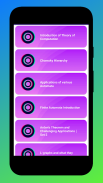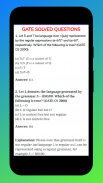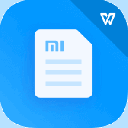






Automata Theory | GATE Solved

Description of Automata Theory | GATE Solved
Automata Theory App is a classroom notes & handbook on Automata theory subject for Information technology (IT), Computer Science engineering, discrete mathematics & Mathematics students. It is part of engineering education which brings important topics, notes, news & blog on the subject.
Automata Theory plays a major role in the theory of computation, compiler construction, artificial intelligence, parsing and formal verification. Automata theory is faster learning of the subject and quick revisions of the topics.
Also get the hottest international engineering & technology news on your app powered by Google news feeds. We have customized it so that you get regular updates on subject from international/national colleges, universities, research, industry, applications, engineering, tech, articles & innovation.
Automata Theory is a branch of computer science that deals with designing abstract selfpropelled computing devices that follow a predetermined sequence of operations automatically. An automaton with a finite number of states is called a Finite Automaton. This is a brief and concise Learn Automata Theory Full that introduces the fundamental concepts of Finite Automata, Regular Languages, and Pushdown Automata before moving onto Turing machines and Decidability.
This Automata Theory App has a good balance between theory and mathematical rigor. The readers are expected to have a basic understanding of discrete mathematical structures.
Some of topics Covered in Automata theory are:
1. Introduction to automata theory and Formal Languages
2. Finite automata
3. Deterministic finite state automaton (DFA)
4. Sets
5. Relations and Functions
6. Asymptotic Behavior of Functions
7. Grammar
8. Graphs
9. Languages
10. Nondeterministic finite automaton
11. Strings and Languages
12. Boolean Logic
13. Orders for Strings
14. Operations on languages
15. Kleene Star, ‘∗’
16. Homomorphism
17. Machines
18. The power of DFAs
19. Machine types that accept non-regular languages
20. Equivalence of NFA and DFA
21. Regular Expressions
22. Regular Expressions and Languages
23. Building Regular Expressions
24. NFAs to Regular Expression
25. Two-way Finite Automata
26. Finite Automata with Output
27. Properties of regular sets (Languages)
28. Pumping Lemma
29. Closure properties of regular languages
30. Myhill-Nerode Theorem-1
31. Introduction to Context-Free Grammars
32. Conversion of Left-linear Grammar into Right-Linear Grammar
33. Derivation Tree
34. Parsing
35. Ambiguity
36. Simplification of CFG
37. Normal Forms
38. Greibach Normal Form
39. Pushdown Automata
40. Transition Functions for NPDA
41. Execution of NPDA
42. Relation between pda and context free language
43. CFG to NPDA
44. NPDA to CFG
45. Properties of context-free languages
46. Proof of Pumping Lemma
47. Usage of Pumping Lemma
48. dicision Algorithms
49. Turing Machine
50. Programming a Turing Machine
51. Turing Machines as Transducers
52. Complete language and functions
53. Modification of turing machines
54. Church-turing thesis
55. Enumerating Strings in a Language
56. Halting Problem
57. Rice's Theorem
58. Context sensitive grammar and languages
59. The chomsky hirarchy
60. Unrestricted grammar
61. Introduction to Complexity Theory
62. polynomial time algorithm
63. boolean satisfiablity
64. Additional NP problem
65. Formal systems
66. Composition and recursion
67. Ackermann's theorem
68. Propositions
69. Exampleof Non Deterministic Finite Automata
70. Conversion of NFA to DFA
71. Connectives
72. Tautology, Contradiction and Contingency
73. Logical Identities
74. Logical inference
75. Predicates and quantifiers
76. Quantifiers and logical operators
77. Normal forms
78. Mealy and moore Machine
79. Myhill-Nerode theorem
80. Decision algorithms
81. NFA Questions
82. Binary Relation Basics
83. Transitive, and Related Notions
84. Equivalence (Preorder plus Symmetry)
85. The Power Relation between Machines
86. Dealing with Recursion

























